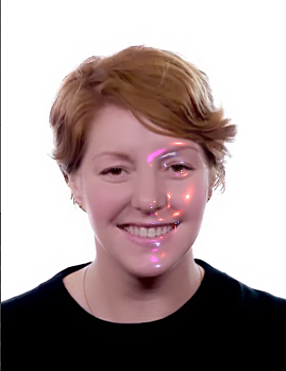AR Meets AI | Analyzing Industrial Use Cases and Business Benefits
Sanam Malhotra | 16th October 2019

Augmented reality (AR) has revolutionized the way humans interact with their physical environment. However, the key source of immersive user experience is the underlying combination of artificial intelligence (AI) and augmented reality (AR). AI encompasses computer vision development services that enable controlling of 2D and 3D objects in AR systems. Today, the combination of AI and AR is entering various business operations such as assembly, warehousing, repair, and maintenance.
This blog post explores potential industrial use cases of augmented reality with artificial intelligence.
Augmented reality overlays our physical reality by adding layers of computer-generated contextual information including text, graphics, video, sound, feedback, GPS data, and more. AI-powered AR systems provide a real-time user interface for human interaction with objects like retail products, business equipment, and digital devices.
Let’s explore how AI complements AR to generate significant business and customer value in different industries.
Social Media Platforms
The introduction of AR has given a major boost to the popularity of social media platforms. Businesses have witnessed a significant increase in sales resulting from active social media outreach efforts and audience engagement. Platforms with vibrant facial filters such as Snapchat, Instagram, Facebook Messenger, etc. are creating a magnetic effect on millennials.

Real-time AR facial filter effects at work.
Here are a few of the many interactive social media uses cases of AR and AI-
a) Businesses can use facial filters with object detection capabilities to create interactive brand promotion campaigns. AR apps can also enable businesses to connect remote customers with live events for real-time engagement and brand awareness.
b) Also, AI can be deployed to build Virtual AR stores that enable consumers to try products virtually. Businesses using such technologies have observed a notable increase in sales metrics.
How Oodles AI is impacting business growth with Artificial Intelligence and Augmented Reality?
With experiential knowledge in social media AR content, we build uniquely engaging experiences including filters, 3D Bitmojis, and virtual brand stores. We use AI-powered face and plane tracking techniques to facilitate video streaming and retail businesses.
Related- Enhancing Customer Engagement with Conversational AI Chatbots
Gaming Industry
The multi-dimensional applications of AR in video gaming is essential for an enhanced and immersive gaming experience. Ericsson Consumer Lab’s report Ready, Stead, Game! suggests that the immersive experience of augmented reality is the core driving factor for AR gamers.
Here is how gaming developers can deploy AI and AR for engaging user experience-
a) AI’s machine learning algorithms use with specific gaming data to trigger real-time changes across devices.
b) With AI-powered facial recognition capabilities, AR game controls can be made responsive to facial gestures and expressions. It can provide a fully handsfree AR gaming experience to users.
c) The natural language processing (NLP) capabilities of AI can be used to take user inputs to manage real-time gaming instructions.
How Oodles AI is combining AI with AR for virtual gaming platforms?
The AI team at Oodles uses computer vision services to create the following interactive gaming experiences-
a) We use computer vision resources such as OpenCV and TensorFlow to track facial movements to build responsive gaming experiences.
b) Our team is skilled at using various AR tools such as Facebook’s Spark AR, Unity, and Epic’s Unreal Engine to create effective filter effects.

Building an augmented reality gaming interface at Oodles AI.
Talk to our AI development team to know more about our AI-powered augmented reality services.



